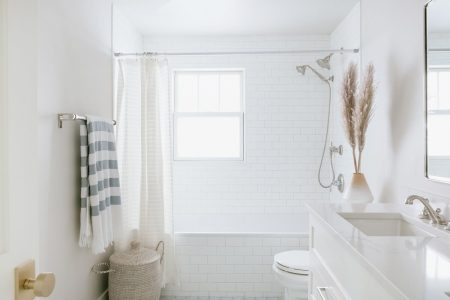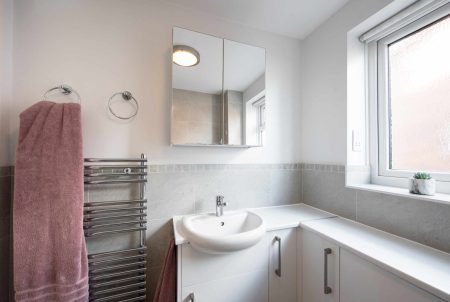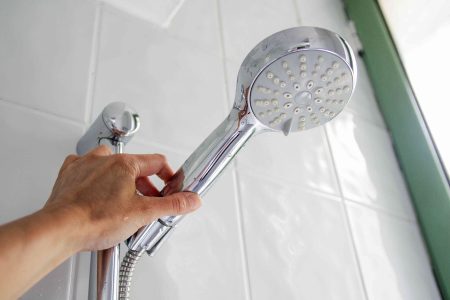Not everyone speaks plumbing. To make things more complicated, some plumbing component names are not self-explanatory at all. If you have to buy a part, look something up, or call a plumber, it will be easier if you know the names of the parts involved.
The bathroom sink, for example, has several basic parts that can break, leak or become blocked. All of these are widely available and easy to replace, if necessary. But you need to know what to ask for when shopping for parts.
Shutoff Valves
The shutoff valves are the small valves (usually metal but sometimes plastic) located between the incoming water supply pipes and the supply hoses or tubes that connect to the tailpieces on the sink faucet. Most have an oval, football-shaped handle that you turn to open or close the valve.
Also called stop valves, shutoff valves allow you to turn off the water supply at the sink, rather than shutting off the water to the whole house. They are seen in pairs: one valve controls the hot water; the other controls the cold water. Many shutoff valves use compression fittings, so they can be installed onto the water pipes without soldering. But you will have to turn off the water to the house to replace a shutoff valve.
Supply Tubes
From the sink faucet tailpieces down to the shutoff valves, you will usually see a pair of narrow supply tubes. They can be made of braided wire mesh, plastic mesh (usually white), solid plastic (often gray), or chromed copper. They are usually connected to the tailpieces and shutoff valves with attached nuts. These supply tubes sometimes fail, and it’s not uncommon to have to replace them.
Drain Tailpiece
The tailpiece, or sink tailpiece, is the straight section of pipe that connects to the bottom of the sink drain fitting. If the sink has a pop-up drain, the lever rod of the drain assembly connects to a port on the back of the tailpiece. Typically, the tailpiece attaches to the drain fitting with a slip nut: a threaded ring that can be tightened and loosened by hand (or with gentle persuasion from channel-type pliers). Underneath the nut is a tapered plastic washer that creates a watertight seal.
P-Trap
The P-trap is made up of two parts: the U-bend (3a) and the trap arm (3b). These two curved sections of pipe allow your sink to be connected, ultimately, to the sewer line. The curved trap is a simple safety feature that holds standing water, which prevents sewer gasses from rising up and out of your sink drain. The bottom of the U-bend remains filled with water so that gasses can’t pass through.
Each time you run water down the drain, the old water in the bend is flushed out and is replaced with new water. The P-trap parts are assembled with slip-nut joints, although in some older houses you may see solvent-glued traps. If you have one of these, it’s a good idea to replace with a trap that can be disassembled, such as a slip-nut joint.
Drain Pipe
The sink drain pipe is connected to the household plumbing system. It connects to the trap arm with yet another slip-nut joint. (Slip nuts are what make sink plumbing repairs so easy.) Most drainpipes for bathroom sinks are three inches in diameter, although they can be smaller or larger.
Read the full article here














